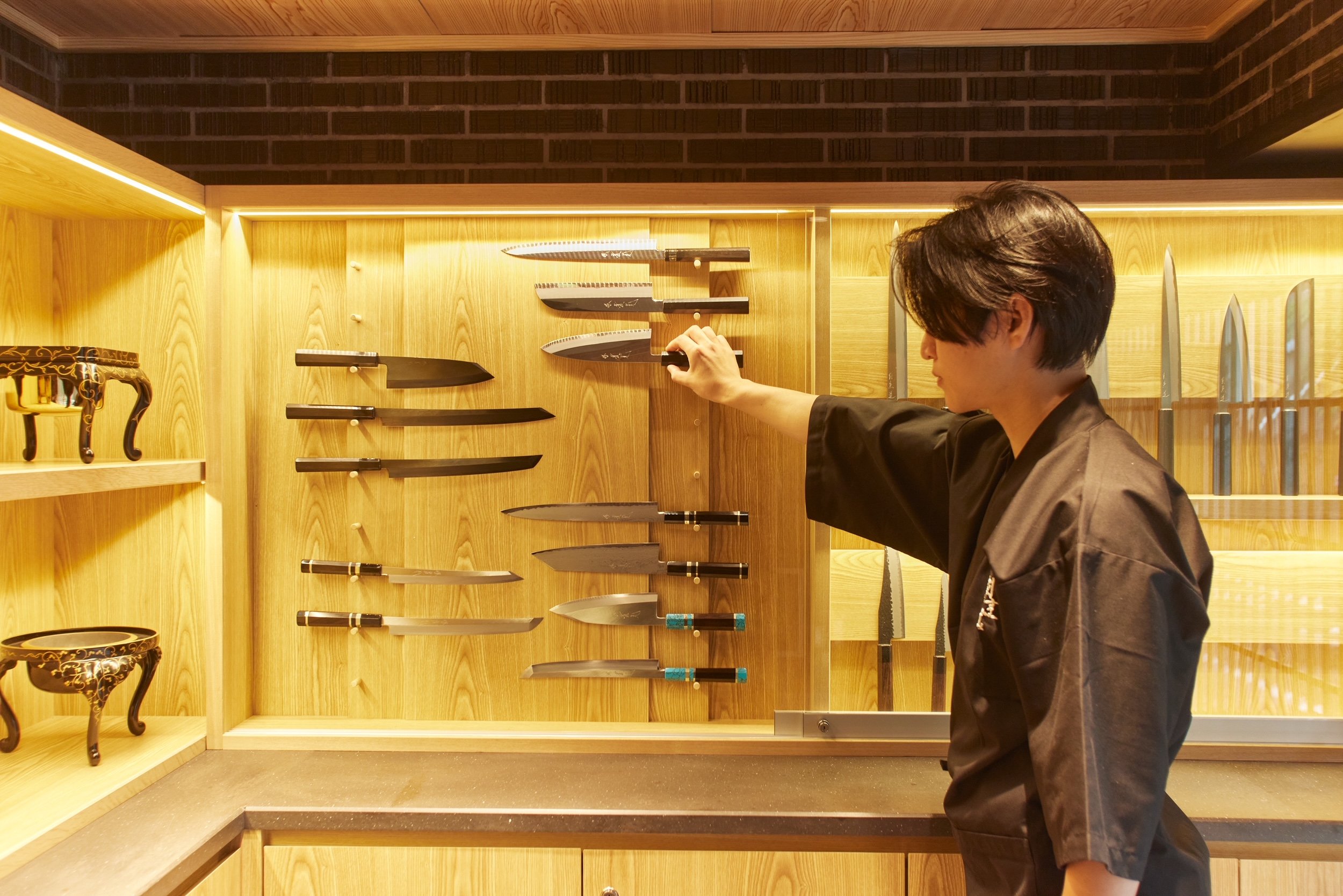
Answering your common questions
The origin of the Knife?
-
The origins of Japanese knives can be traced back to the Samurai sword-making tradition. Skilled swordsmiths applied their expertise to create kitchen knives with similar precision and craftsmanship. Over time various styles of Japanese knives developed, each tailored to specific culinary tasks.
What is the difference compared to steel knives?
-
Stainless steel knives are made with a blend of iron, carbon, chromium, and other metals. The addition of chromium provides corrosion resistance, making stainless steel knives less prone to rust and staining compared to traditional steel knives. This makes stainless steel knives easier to maintain and suitable for use in environments with high moisture levels.
What knife can be used for anything?
-
A versatile chef's knife, such as a Gyuto or Santoku, is often considered a go-to option for a wide range of kitchen tasks. These knives are designed to handle various cutting, chopping, slicing, and dicing tasks with ease, making them suitable for almost everything in the kitchen.
The difference between Santoku and Gyuto knives
-
Santoku knives typically have a shorter, wider blade with a flat edge, making them ideal for chopping and slicing. Gyuto knives have a longer, narrower blade with a curved edge, offering more versatility for slicing, dicing, and precise cutting tasks.
What is a 3-layer structure?
-
A three-layer structure in knife-making refers to a construction method where the blade consists of three layers of different types of steel. The core layer, known as the "hagane," is often a harder steel that retains a sharp edge well. Surrounding the core are two layers of softer steel, known as the "jigane," which provide flexibility and durability to the blade. This combination of hard and soft steel layers creates a blade with excellent edge retention and strength, making it a popular choice for traditional Japanese knives.
What is this pattern?
-
The Damascus pattern seen on knives is achieved by layering and folding steel during the forging process, creating a visually striking wavy or mottled design. This technique not only adds aesthetic appeal but also contributes to the blade's strength and durability, as the multiple layers of steel enhance its structural integrity and resistance to wear.
Can it be put in the dishwasher?
-
it's not advisable to put Japanese knives in the dishwasher. The harsh conditions in a dishwasher can damage the blade's edge, degrade the handle material, and potentially cause the pattern to fade over time. For maintenance, hand washing with mild soap and warm water followed by thorough drying is recommended to preserve both the appearance and performance of these knives.
How to sharpen a knife
-
To sharpen a knife, choose a sharpening tool such as a stone or honing rod. Hold the knife at a consistent angle and gently move the blade across the sharpening surface.
Which whetstone should I buy?
-
Opt for a dual-sided whetstone with coarse and fine grits for sharpening and polishing. Choose a size that accommodates your knives comfortably, and consider materials like water stones or combination stones for versatility and effectiveness.








